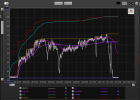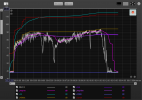- Joined
- Dec 25, 2023
- Messages
- 593
- Likes
- 628
Copied and pasted from another thread:
Additionally, I would say that distortion is bad for me PERSONALLY because its harmonics mask the sound of instruments, leading to less detail by definition.This is tricky if your sound system is the means to an end that which is the source material. Then, no matter what kind of thing you're listening to, you want to listen to that material as accurately as possible. That means reproducing the imperfections present during recording as faithfully as possible. The problem with this argument comes from those who prefer reproducing "real life" as much as possible, in which case the source material is a means to that end as well.
Personally, I'm a "recordings are the end" type of person, because I'm used to live performances if I want the real life experience, because I'm a musician first and audio person second. However, I can see where you're coming from if you want recordings to be the means to the realism end, and that's just fine because it's a personal preference.


